At the Global Cardio-Oncology Summit (GCOS) 2025, organized by The International Cardio-Oncology Society, Dr. Ntobeko Ntusi delivered a presentation on the evolving role of cardiovascular imaging across the cancer care continuum. Opening with a reflection on accountability and justice in medicine, Dr. Ntusi stated, “We have committed ourselves to a continued promotion of justice and dignity in the health community.”
The session examined how clinical excellence, technological innovation, and equitable access intersect in shaping the future of cardio-oncology care.
Acknowledging Inequity and Commitment to Justice
Dr. Ntusi reflected on the social and ethical dimensions of healthcare delivery, acknowledging persistent inequities that shape access to medical care and technology. He highlighted the need for institutions to recognize systemic shortcomings and to strengthen accountability, transparency, and fairness in healthcare systems.
“We must confront the ways our systems have contributed to disparities,” he said. “True progress in cardio-oncology means ensuring that innovation benefits everyone – not only those in high-resource settings.”
Cardiovascular Involvement in Cancer Therapy
Dr. Ntusi discussed how cancer therapies can affect all components of the cardiovascular system – from myocardium and endothelium to vasculature and pericardium. He described the wide spectrum of therapy-related cardiac complications, including myocarditis, cardiomyopathy, arrhythmias, valvular and pericardial disease, vasculitis, hypertension, and thromboembolism.

This framework underscored the growing importance of cardiovascular imaging in early detection, diagnosis, and long-term monitoring of treatment-related disease.
“Advanced tissue characterization improves our definition of cardiac ultrastructural phenotypes and deepens our understanding of therapy-induced injury,” he noted.
He outlined how multimodality imaging – from echocardiography and cardiac CT to CMR and nuclear medicine – supports clinicians across the cancer care continuum. Dr. Ntusi highlighted the clinical utility of cardiovascular imaging in:
- Diagnosis: defining disease extent, activity, and severity
- Prognosis: aiding in risk stratification and outcome prediction
- Treatment: guiding therapy selection and monitoring response
- Research: advancing understanding of pathophysiology and inflammation
Echocardiography: The Cornerstone in Low-Resource Settings
Moving from conceptual frameworks to clinical realities, Dr. Ntusi explored the strengths and limitations of cardiovascular imaging modalities commonly used in cardio-oncology. He noted that technological sophistication alone does not guarantee better care; what matters most is appropriateness and accessibility – selecting the right test for the right patient in the right context.
Dr. Ntusi described echocardiography as the foundation of cardiovascular imaging across much of the developing world. Its affordability, portability, and non-invasive nature make it indispensable in regions where access to advanced imaging is limited. Beyond its diagnostic value, echocardiography remains a key tool for risk assessment, monitoring treatment response, and long-term follow-up.
He also addressed its limitations, including variability in operator skill, reduced image quality in certain patient populations, and the technical challenges of low-resource environments. These issues, he said, highlight the importance of training, standardization, and innovation to improve image quality and reliability.
Echocardiography, he concluded, remains “the mainstay of cardiovascular imaging in low- and middle-income countries.”
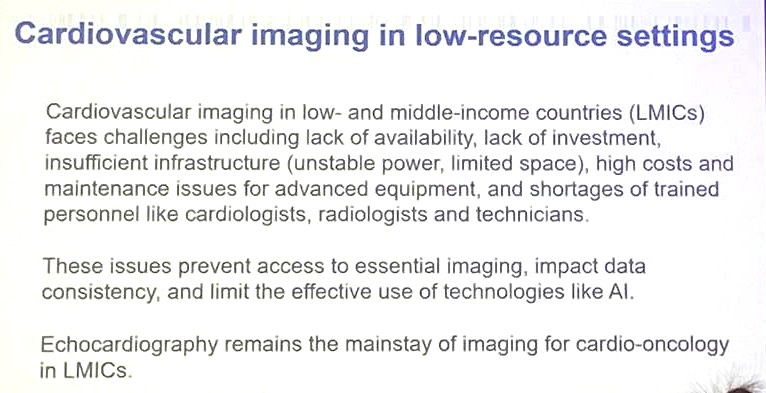
Computed Tomography: Precision and Practical Constraints
Dr. Ntusi discussed the role of computed tomography (CT) in cardio-oncology, emphasizing its ability to provide exceptional anatomical resolution and structural clarity. CT is particularly useful for assessing coronary arteries, diagnosing cardiomyopathy, and detecting structural abnormalities related to cancer therapy.
However, he noted that the modality’s benefits are often constrained by cost, radiation exposure, and limited availability in many LMICs. Dependence on sophisticated equipment and specialized expertise restricts its broader use.
Sustainable implementation, Dr. Ntusi suggested, will depend on investment in infrastructure, training, and cost-effective protocols that allow clinicians to integrate CT safely and efficiently without widening healthcare disparities.
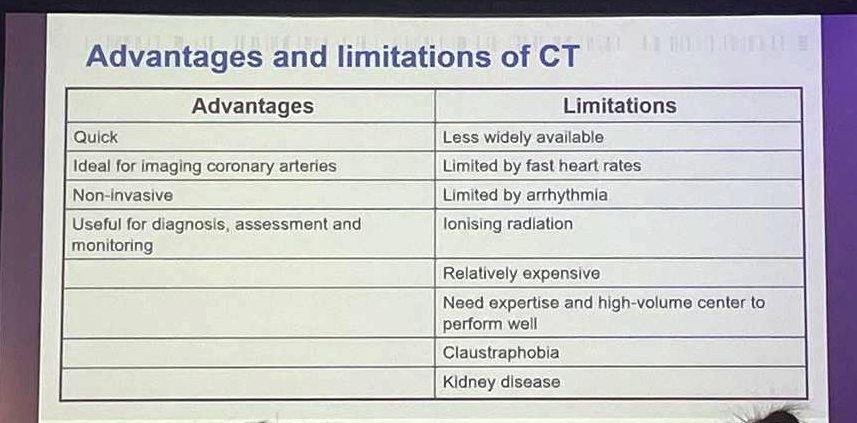
Cardiac Magnetic Resonance: The Gold Standard in Tissue Characterization
Dr. Ntusi identified cardiac magnetic resonance (CMR) as the gold standard for tissue characterization in cardio-oncology. CMR provides detailed insights into myocardial inflammation, fibrosis, perfusion, and function, enabling precise assessment of therapy-induced cardiotoxicity.
He noted that CMR can differentiate between malignant and benign cardiac masses, quantify myocardial injury, and evaluate treatment response. Yet significant challenges remain: high costs, long scan times, maintenance requirements, and limited scanner availability – particularly in Africa, where the density of MRI scanners is less than 0.1 per million population, compared with over 60 per million in Japan.
Despite these disparities, he expressed optimism that technological innovation, regional collaboration, and strategic investment could help bridge this global gap in advanced cardiovascular imaging.
Artificial Intelligence: Opportunities and Limitations
Citing recent literature, including Haneman et al., Circulation 2024, Dr. Ntusi discussed the expanding role of artificial intelligence (AI) in cardiovascular imaging. He described AI as a powerful tool for image acquisition, reconstruction, and interpretation, offering the potential to improve early detection, diagnostic consistency, and workflow efficiency.
While promising, AI remains unevenly distributed. Many regions face challenges including limited infrastructure, data diversity, trained personnel, and ethical or regulatory barriers.
“AI can amplify excellence,” he said, “but without equitable access to infrastructure and data, it risks amplifying inequality.”
He emphasized that the effective integration of AI requires global collaboration, investment in data equity, and the design of context-sensitive tools that meet the needs of diverse healthcare systems.
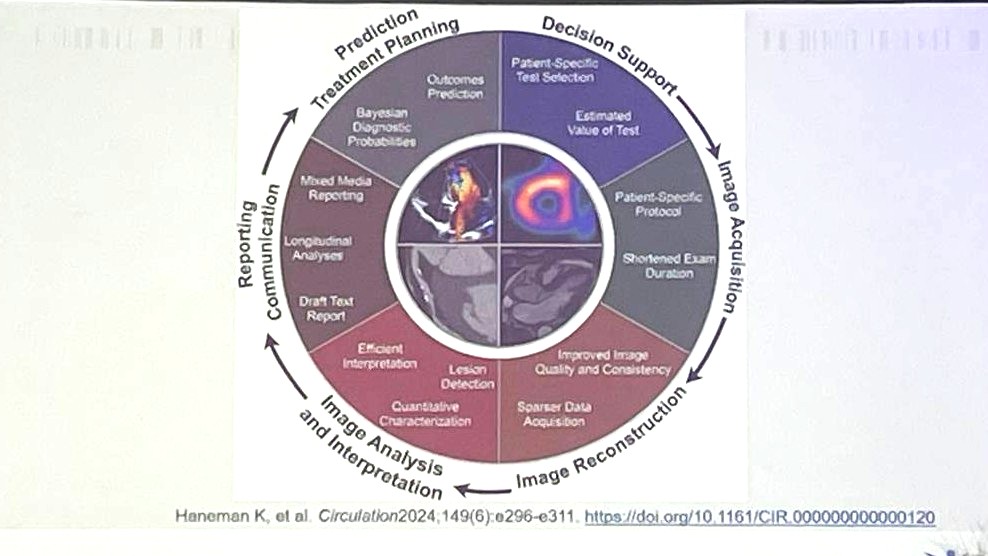
Environmental Sustainability in Imaging
In the final part of his talk, Dr. Ntusi addressed the environmental and economic implications of cardiovascular imaging. He noted that high-resource modalities such as MRI and CT contribute disproportionately to greenhouse gas emissions compared with ultrasound-based techniques.
“Sustainability is not just an environmental issue – it’s an equity issue,” he said. “The same systems that limit access to imaging also suffer most from its environmental impact.”
Dr. Ntusi proposed that healthcare systems adopt a “sustainable value” framework when evaluating imaging technologies – balancing diagnostic benefit with environmental, social, and economic considerations. Reducing waste, improving energy efficiency, and optimizing imaging protocols, he said, are key to minimizing environmental impact without compromising care quality.
He linked sustainability to broader goals of equity, arguing that disparities in imaging access mirror structural inequities in global health. Addressing these challenges, he concluded, requires long-term investment, collaboration, and commitment to justice in healthcare delivery.
Conclusion: Integrating Innovation, Access, and Sustainability
Dr. Ntusi’s presentation at GCOS 2025 highlighted the need to align innovation in cardio-oncology with the realities of access and sustainability. Advances in imaging and artificial intelligence offer new opportunities for diagnosis and care, but their value depends on equitable availability, robust infrastructure, and ethical implementation.
His talk outlined three guiding principles for the field:
1. Clinical appropriateness – selecting the right test, for the right patient, in the right context..
2. Responsible innovation – developing technologies that expand access rather than deepen disparities.
3. Equity as a foundation – ensuring that every patient, regardless of geography or resources, benefits from progress in cardiovascular care.
“Equity is not an outcome of progress – it must be the principle that guides it,” Dr. Ntusi concluded.
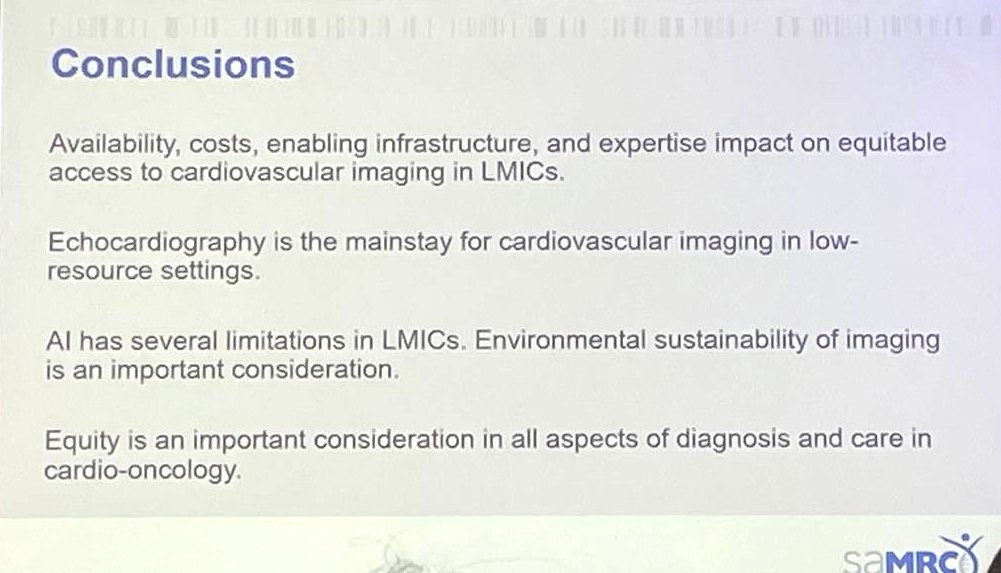
You Can Read other highlights from GCOS 2025:
15 Posts Not To Miss from GCOS 2025
Michael Fradley Has Been Named New President Elect of the IC-OS
Global Cardio-Oncology Summit (GC-OS) 2025: Access to Oncology Care. A Global Perspective
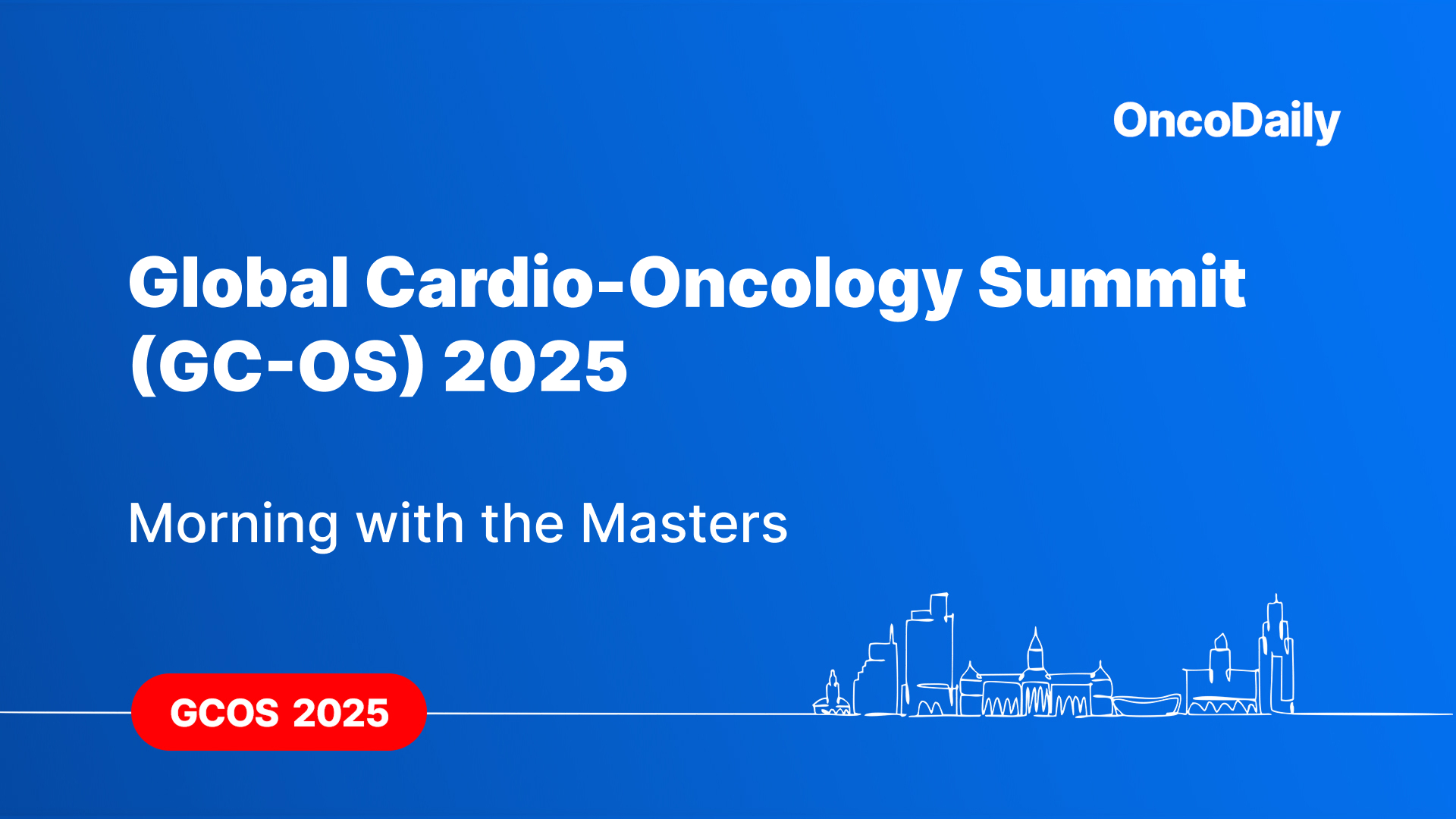
Written by Lena Mkrtchyan, MD
